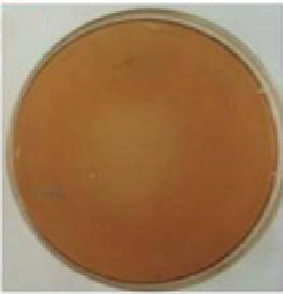Environmental Engineering Reference
In-Depth Information
(a)
(b)
(c)
(d)
(e)
figurE 23.5
(a) Unfiltered water containing
E. coli
. (b)
E. coli
culture from polluted water. (c) Filtration by using a CNT filter. (d) Water
filtered through a nanotube filter. (e) Culture of filtered water showing the absence of bacteria.
Alumina nanoparticles (7-25 nm) were successfully used for ultrafiltration membrane; the pore size and molecular cutoff
weight of this membrane depends on the uniformity of the nanoparticles [39]. It was also observed that doping of alumina
nanoparticles with Fe, Mn, and la can increase the selectivity and permeate flux. A novel nanofilter membrane has been fabri-
cated by depositing 4.5-5 layer pairs of styrene sulfonate/poly (allylaminehydrochloride) onto porous alumina [40]. This new
nanofilter membrane shows high water flux and retention of divalent cations like chlorides and sulfate. Another new approach
was the deposition of multilayers of charged polypeptide (poly-9-glutamic acid or ploy-l-lysine) inside the pores of a highly
functionalized polycarbonate membrane.
23.9
dEndrimErs
Dendrite polymers are another good nanomaterial for the use of water purification; these are basically highly branched macro-
molecules with a core, interior branched cells, and terminal branched cells. They are usually symmetrical and spherical macro-
molecules with a potential to bind with an array of receptors on cell membranes or other biological surfaces. Many nanocomposites
based on dendrimers have the capacity to enhance ultrafiltration. The first complete dendrimer family is PolyAMidoAMine
(PAMAM), which was commercialized in 1990. Dendritic polymers exhibit very unique features like small size (1-20 nm) and
high stability, which make them an attractive functional material for water purification. These nanocomposites can also be used
in recyclable unimolecular micelles for recovering organic solutes from water, and to prepare scaffold and template for redox
and catalytically active nanoparticles.
23.10
mEtal nanoParticlEs
Metallic nanoparticles exhibit a very strong UV-VIS absorption band that is not present in the spectrum of the bulk metal. These
absorption bands are due to the collective excitation of the conduction electrons when the size of the particles is less than the
mean free path of the electron in the metal. This is known as the localized surface plasmon resonance (lSPR). lSPR can be
supported by a wide variety of structures like spheres, rods, and triangles. Particle size and shape are even more important in
determining the position of the resonance. As the size of the particle increases, there is an increase in the amount of absorption
and scattering, both of which contribute to the optical extinction of a metallic nanoparticle. Moreover, as the size increases,
scattering takes over from absorption as the dominant contributor to the extinction, and there is a change in the position and
width of the lSPR. Metal nanoparticles have been used as attractive adsorbents because they have a much larger surface area
than bulk particles, in addition to their easy functionalization. It was observed that Mgo nanoparticles are a very effective bio-
cide both against gram-positive and gram-negative bacteria. These magnesium nanoparticles absorb large amounts of halogen
molecules, sometimes up to 20% by weight. Gold nanoparticles duly coated with palladium can effectively remove TCE from
groundwater. Zinc oxide nanoparticles have been used to remove arsenic from water, while the bulk zinc oxide cannot even
adsorb arsenic. Ferrites and other iron-containing minerals such as akaganeite, feroxyhyte, ferrihydrite, goethte, hematite, lepi-
docrocite, maghemite, and magnetite have been used for waste water treatment. Magnetite was used for the removal of actinide





